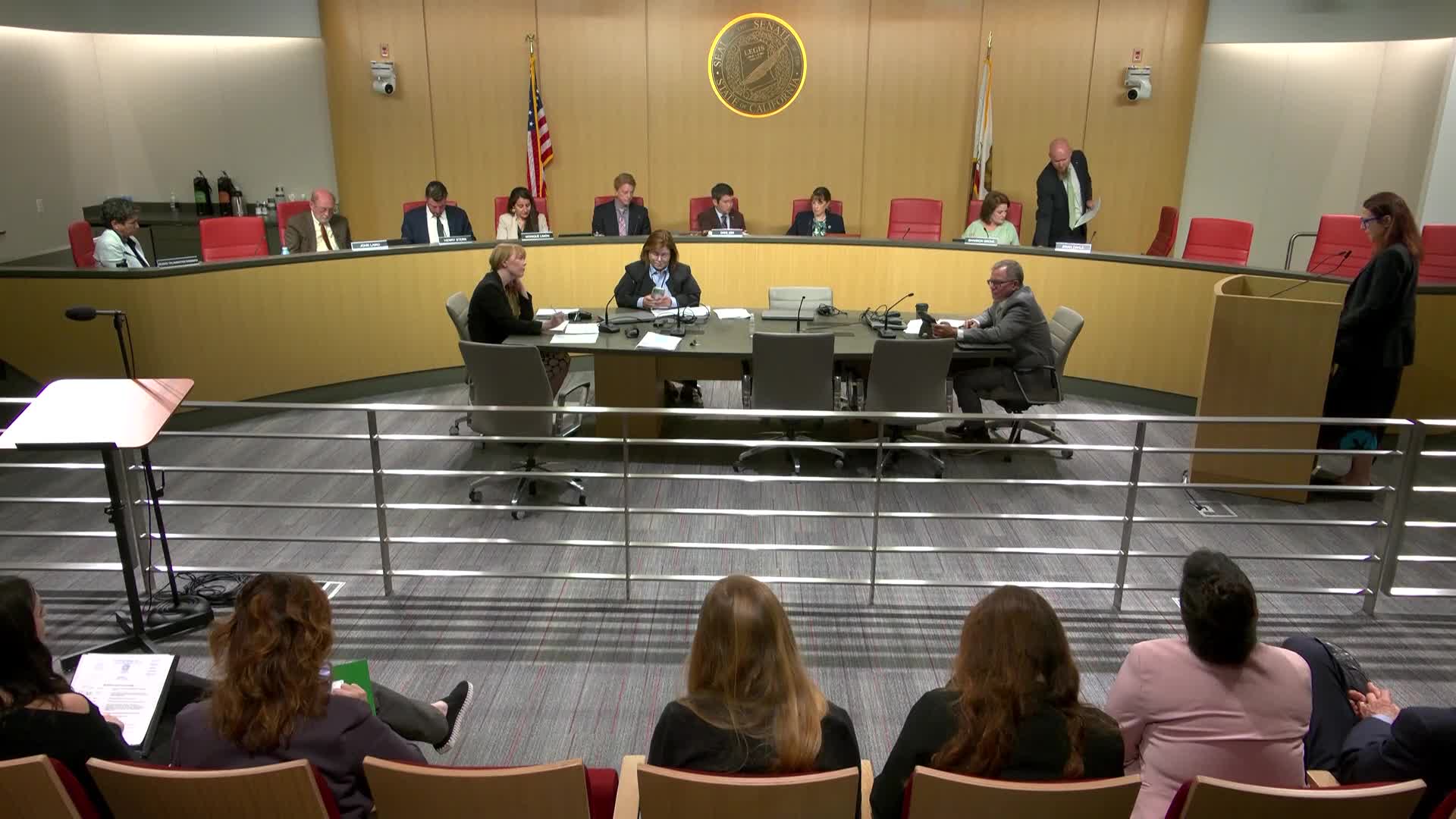California Moves to Ban Deadly Rodenticides to Protect Wildlife
August 28, 2024 | Natural Resources and Water, Standing Committees, California State Senate, Senate, Legislative, California
This article was created by AI summarizing key points discussed. AI makes mistakes, so for full details and context, please refer to the video of the full meeting. Please report any errors so we can fix them. Report an error »

In a recent government meeting, discussions centered around the proposed Assembly Bill 2552, aimed at regulating the use of anticoagulant rodenticides, commonly known as rat poisons. The bill seeks to add two first-generation anticoagulants, chlorsafenone and warfarin, to an existing moratorium on rodenticides to protect non-target wildlife from unintentional poisoning. Proponents argue that these substances have been linked to severe health issues in wildlife and pose significant public health risks, particularly to children.
During the meeting, it was highlighted that over 3,000 human poisonings related to anticoagulant rodenticides were reported in 2021, with a substantial number involving children under six. Advocates for the bill, including wildlife conservationists and scientists, presented evidence of widespread poisoning among various species, including hawks, owls, and mountain lions, emphasizing the need for immediate action to prevent further ecological damage.
Lisa Owens Viani, Director of Raptors Are the Solution, shared her organization’s experiences with the detrimental effects of these poisons, recounting a traumatic incident involving a family of hawks in her neighborhood. She advocated for more humane and sustainable pest control methods, such as fertility control, which have shown promising results in reducing rodent populations without harming wildlife.
Dr. Rebecca Gulley, a conservation scientist, reinforced the bill's necessity by presenting data indicating that a significant percentage of wildlife tested positive for anticoagulant residues. She noted that these poisons not only kill but also weaken animals, leading to broader ecological consequences.
While the bill received strong support from various environmental and wildlife organizations, it faced opposition from agricultural representatives who argued that existing regulations are sufficient and that the bill could undermine established pesticide review processes. They expressed concerns about the potential economic impact on farmers and the agricultural sector.
The meeting concluded with a call for further discussion on the bill, which aims to balance public health, agricultural needs, and wildlife conservation. As the legislative process continues, stakeholders remain divided on the best approach to managing rodent populations while safeguarding California's diverse ecosystems.
During the meeting, it was highlighted that over 3,000 human poisonings related to anticoagulant rodenticides were reported in 2021, with a substantial number involving children under six. Advocates for the bill, including wildlife conservationists and scientists, presented evidence of widespread poisoning among various species, including hawks, owls, and mountain lions, emphasizing the need for immediate action to prevent further ecological damage.
Lisa Owens Viani, Director of Raptors Are the Solution, shared her organization’s experiences with the detrimental effects of these poisons, recounting a traumatic incident involving a family of hawks in her neighborhood. She advocated for more humane and sustainable pest control methods, such as fertility control, which have shown promising results in reducing rodent populations without harming wildlife.
Dr. Rebecca Gulley, a conservation scientist, reinforced the bill's necessity by presenting data indicating that a significant percentage of wildlife tested positive for anticoagulant residues. She noted that these poisons not only kill but also weaken animals, leading to broader ecological consequences.
While the bill received strong support from various environmental and wildlife organizations, it faced opposition from agricultural representatives who argued that existing regulations are sufficient and that the bill could undermine established pesticide review processes. They expressed concerns about the potential economic impact on farmers and the agricultural sector.
The meeting concluded with a call for further discussion on the bill, which aims to balance public health, agricultural needs, and wildlife conservation. As the legislative process continues, stakeholders remain divided on the best approach to managing rodent populations while safeguarding California's diverse ecosystems.
View full meeting
This article is based on a recent meeting—watch the full video and explore the complete transcript for deeper insights into the discussion.
View full meeting
